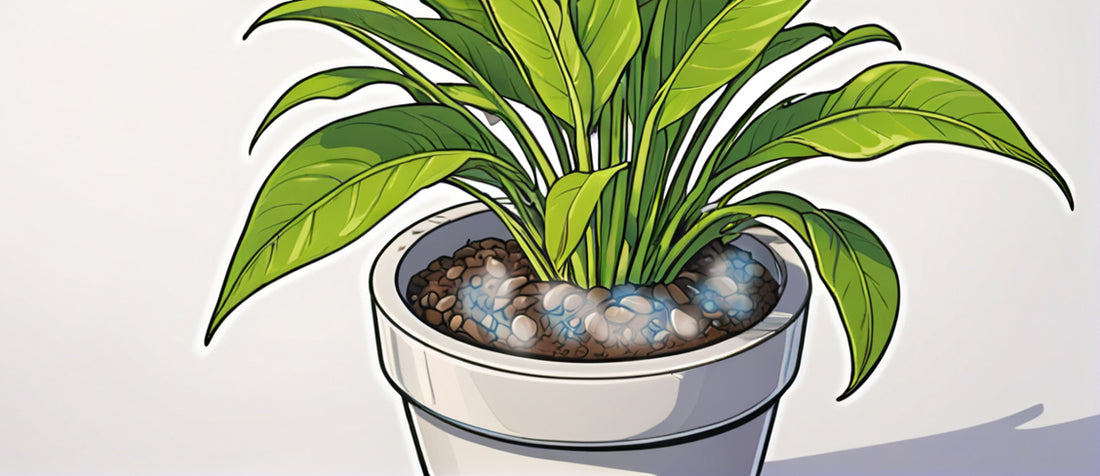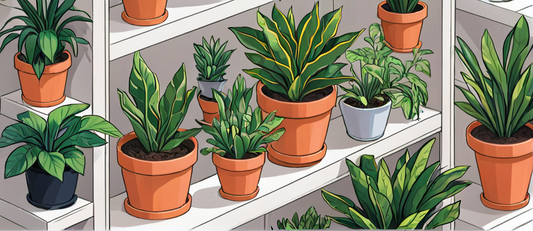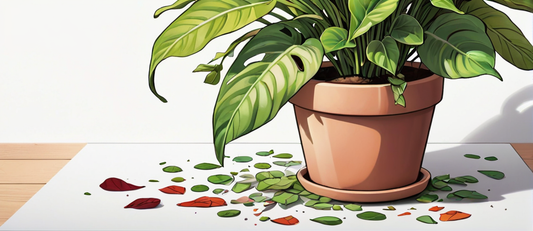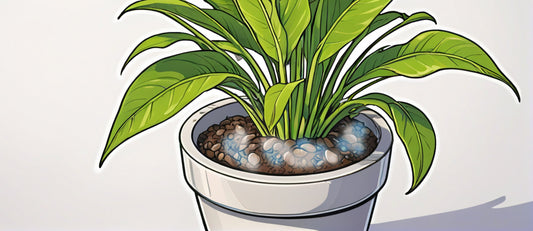

Why does my Indoor Plant soil have mould?
Indoor Plant Care | Plant Health
Quick AnswerMould popping up on your plant's soil? It happens to the best of us! Usually, it's down to a bit too much water, a pot that doesn't drain well, not enough airflow, or it's just a bit muggy in your home. While the mould itself won't hurt your plant, it's a sign that things could get worse – rotting roots and all that nasty stuff.
Seeing white, grey or even brightly coloured fluff on your plant's soil is enough to make any plant lover panic a little. The good news is, the mould itself WON'T kill your plant. The bad news is, it's like a flashing warning light that something needs to change, or root problems could be next.
What the Heck IS Mould, Anyway?
- Nature's Cleanup Crew: It's a kind of fungus, which breaks down dead stuff. A little bit in your soil is normal, especially if it's a rich potting mix
- Grows FAST: Those spores are everywhere. Give them the right conditions (damp + warmth) and it seems to appear overnight!
- Colour Clues: White = common, harmless mould. Yellow, green etc can mean other types of fungus, which might be a bigger concern.
Why Your Plant Pot is Mould City:
- Swamp Monster Watering: #1 culprit! If the soil's always damp, mould loves it. Wait until the top inch at least is dry before watering again.
- Soggy Bottoms: No drainage holes in the pot = mould party waiting to happen. Even with holes, the wrong soil mix can hold TOO much water.
- Airless Jungle: Zero air movement around the pot makes it even worse. Open a window, or use a small fan for better airflow.
- Tropical Vibes Gone Wrong: Some plants love humidity, but if the soil's wet too, that's a recipe for mould AND unhappy roots.
Mould Begone: Your Plant Soil Rescue Plan
While mould looks scary, it's usually a fixable problem. Here's the game plan, from easy to more involved:
Step 1: Stop Watering So Much!
- Finger Test is Your Friend: Push your finger an inch or two into the soil. Dry and crumbly? Time to water. Still damp? Wait a few more days
- "Deep But Infrequent" is Best: When you DO water, give it loads, until it runs out the bottom. This flushes old nutrients through the soil, helping prevent root problems longer-term
- Drainage Check: Does water pool in the saucer for ages? Pot might need more/bigger holes, or the soil mix is too dense.
Step 2: Help Your Plant Dry Out
- Sunshine = Natural Mould Killer: A few hours of gentle morning sun on the soil helps. But if yours hates full sun, don't stress it out!
- Airy Fairy: Even a little airflow makes a difference. Open window when it's not freezing, or small fan on a low setting near your plant
- Top Layer Scoop: If it's a small amount of mould, scraping it off and letting the pot dry out completely will usually do the trick
Step 3: Prevention is Easier Than Cure
- Right Pot Matters: Plastic holds moisture longer than terracotta. If your plant is a slow drinker, terracotta can make a BIG difference.
- Chuck It & Change It: Old, soggy potting mix is mould heaven. When you repot annually (or as needed) this rarely happens
- Humid But Healthy: Some plants NEED high humidity. Our care guides tell you if that's the case, so you can adjust your watering accordingly
Step 4: When to Get Serious (But Don't Panic!)
- Repotting SOS: If the plant looks unhappy even after drying out, or it smells musty, repotting into fresh, well-draining mix is the safest option
- Leaf Loss: A few yellowing leaves after mould is normal. Losing lots, or the leaves going mushy, could mean root rot – send us photos for advice!
- Fungus Fighters: Cinnamon, diluted hydrogen peroxide etc work for mild mould. Stronger fungicides are sometimes needed, we'll guide you on what's safe
Plants That Love Damp Soil... A Bit TOO Much
Some plants naturally need more moisture than others. This is great, but it does make them a bit more mould-prone if you get the care wrong. The classics are:
- Monsteras: Gorgeous, but easily overwatered. Let the soil dry out more than you think between waterings, especially in low light.
- Philodendrons: Similar deal to Monsteras – tropical looks, but don't always need tropical levels of water to be happy indoors.
- Ferns: The fluffy soil most ferns love is perfect for mould if it stays soggy. Smaller pots that dry out faster can be a good solution.
- Palms: Often sold in quite dense soil mix. Fine when they're small, but as they grow they need repotting into something chunkier.



